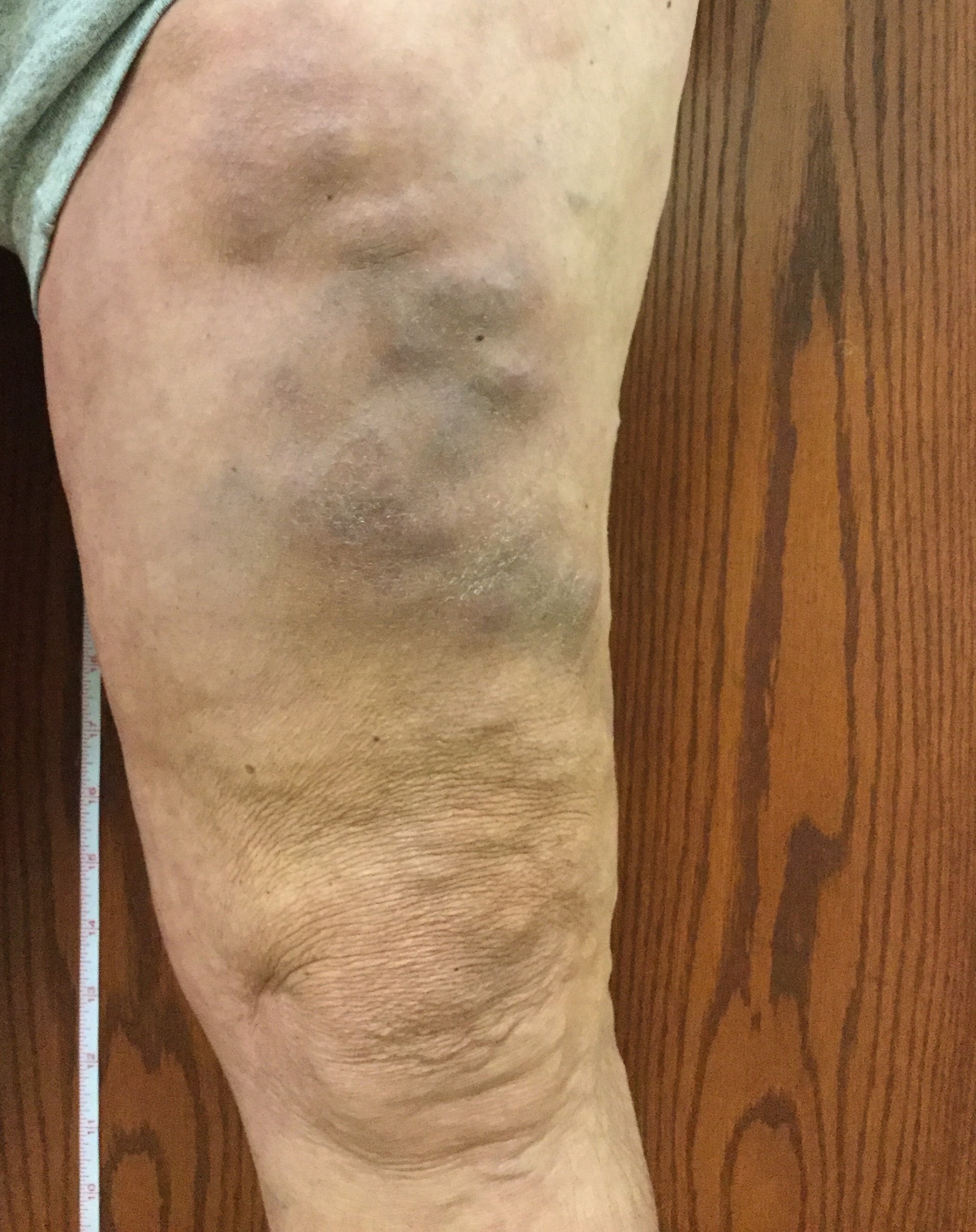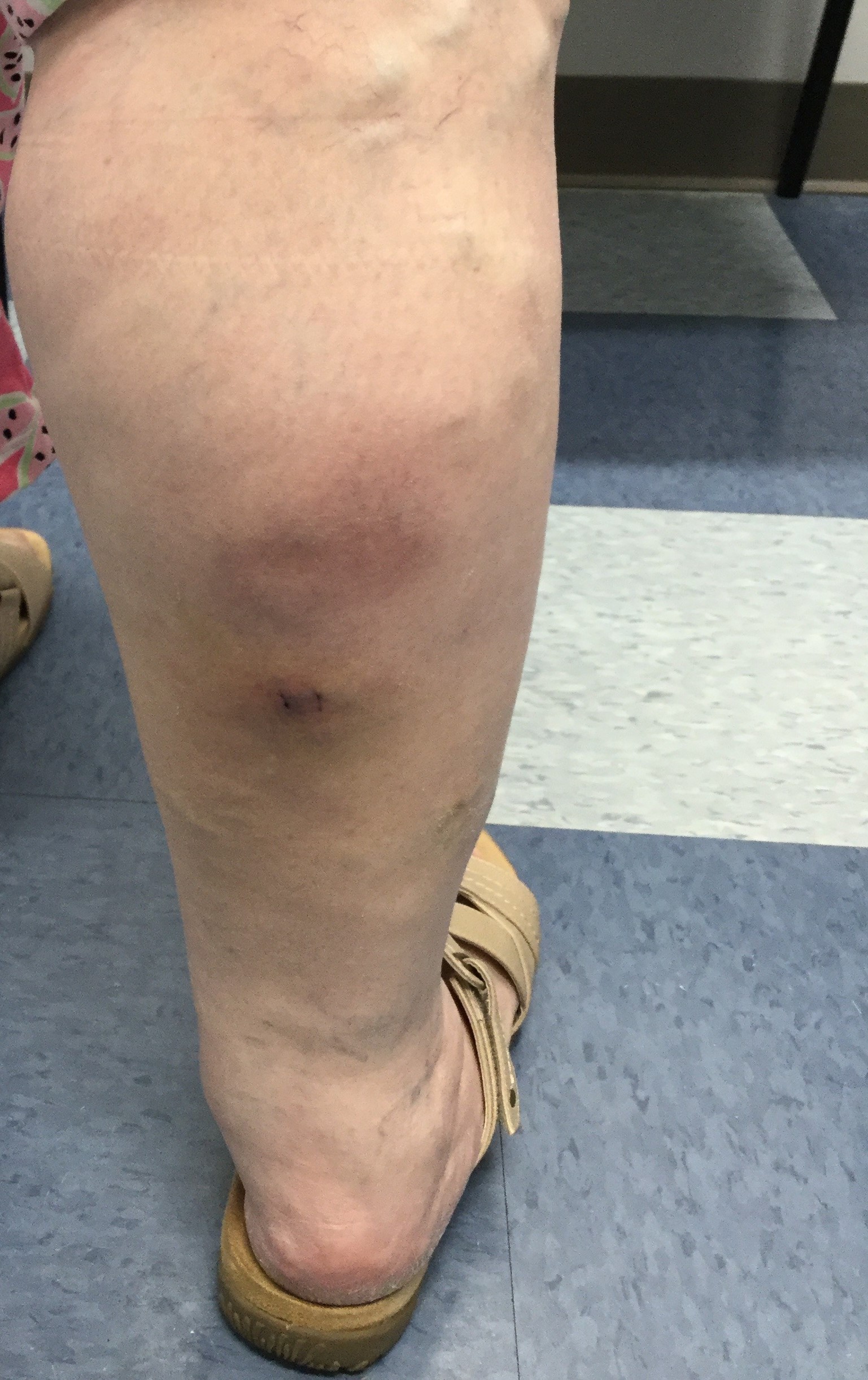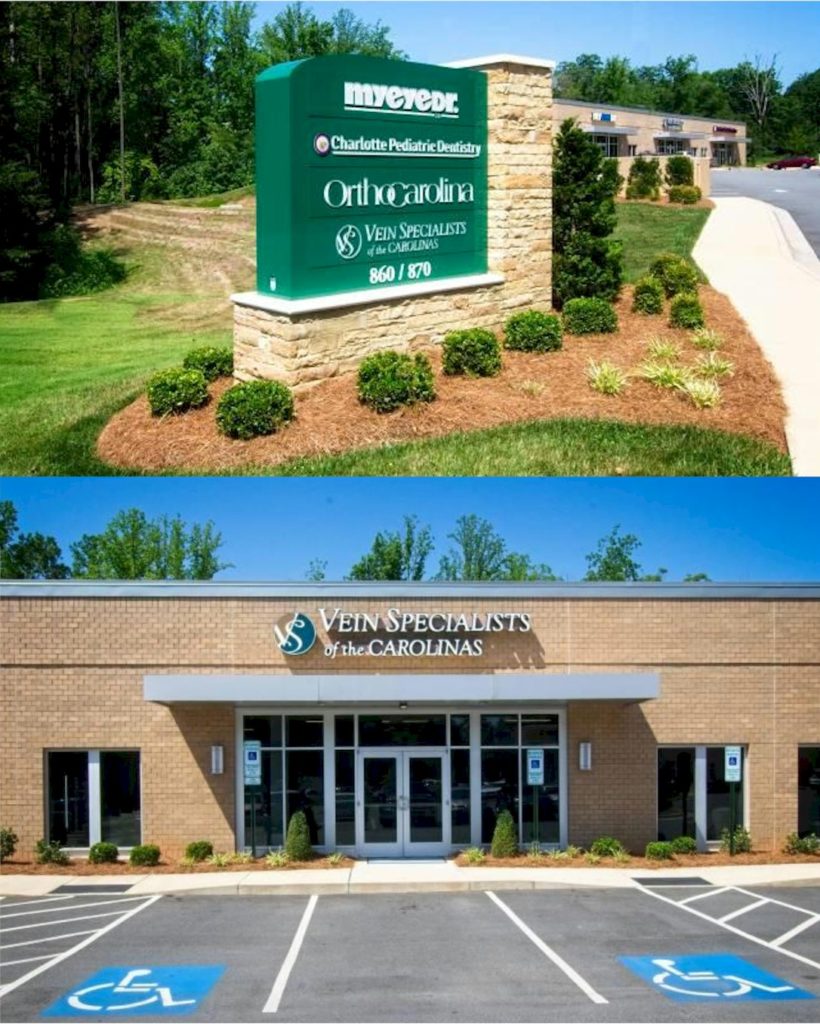Phlebitis
Vein Specialists of the Carolinas
“All We Do Is Veins, All Day Every Day.”
What Is Phlebitis?
(PRONOUNCED: FLEE BITE US)
Full medical name is “Superficial Thrombo Phlebitis” (STP) or “Superficial Venous Thrombosis” (SVT)
- A blood clot that forms in a superficial vein or varicose vein
- Usually appears as red painful knots under the skin.
- Rarely dangerous as opposed to DVT (deep venous thrombosis)
- Superficial veins are beneath the skin but outside the muscle layer
- Deep veins are inside the muscle layer.
- Sometimes the varicose vein is deeper under the skin and cannot be seen, but when it clots it gets red, warm, and tender on the skin.
Causes Of Phlebitis
- Trauma to an area with varicose veins.
- Long periods of inactivity like car rides or plane rides.
- Suddenly being sedentary like going to the hospital or staying in bed from the flu.
- Birth control pills or estrogen replacement therapy.
- Dehydration.
- Inherited or acquired clotting disorders of the blood.
- Cancer.
Treatment For Phlebitis
- Usually resolves on its own. Most of the time, it begins to cool off in a few days. The knots or cords start resolving in a few weeks. For some it may take longer.
- The clot can be evacuated or drained. The pressure is relieved and the pain gets much better almost right away. Rarely done by non vein specialists.
- Anti -inflammatory medication like ibuprofen helps.
- Warm compress or heating pad may help.
- Leg elevation may relieve the pressure.
- Compression garments. Keep adjacent veins empty and clot from spreading.
- Many doctors confuse phlebitis with cellulitis, which is an infection. The red hot tenderness looks and feels the same as if it were infected. Antibiotics may be prescribed which will appear to work because the phlebitis starts going away on its own. Sometimes doctors know it is phlebitis, but prescribe antibiotics just to be on the safe side.
“Thrombophlebitis Migrans”
- Repeat episodes of phlebitis.
- In random areas.
- Even areas without varicose veins.
- Very rare.
- Could be the first sign of an undiscovered cancer.
Even though Phlebitis is rarely serious, seeing a Vein Specialist will get you to the right diagnosis and treatment quickly.

Don’t Assume It’s Nothing
- If studied extremely thoroughly with ultrasound and CT scan, about 25-30% of patients with phlebitis, will be found to have a DVT or PE at that time.
- Of patients who get phlebitis, DVT and PE will be found within the next 3-6 months in 3% and 1% respectively.
- Phlebitis spread to nearby veins. If the phlebitis progresses up the leg toward the groin, it can go into a deep vein and become a DVT. This requires a “blood thinner” and careful follow up. If a blood thinner can’t be tolerated, the vein in which the clot is spreading may need to be ligated before it gets to the deep vein. This happens in less than 7% of patients with SVT.

From The Blog
Understanding the Difference Between Phlebitis and DVT
When it comes to vein health, understanding the nuances between various conditions is crucial. Two commonly confused conditions are Phlebitis and Deep Vein Thrombosis (DVT). At Vein Specialists of the Carolinas, we strive to educate our patients about these conditions...
CHARLOTTE, NC
Phone
Hours
Mon.-Thurs.: 7:30am - 4:30pm
Friday: 7:30am-12:30pm
Address
15825 Ballantyne Medical Place,
Ste. 240
Charlotte, North Carolina 28277
GASTONIA, NC
Phone
Hours
Mon.-Thurs.: 7:30am - 4:30pm
Friday: 7:30am-12:30pm
Address
860 Summit Crossing Place,
Ste. 120
Gastonia, North Carolina 28054






